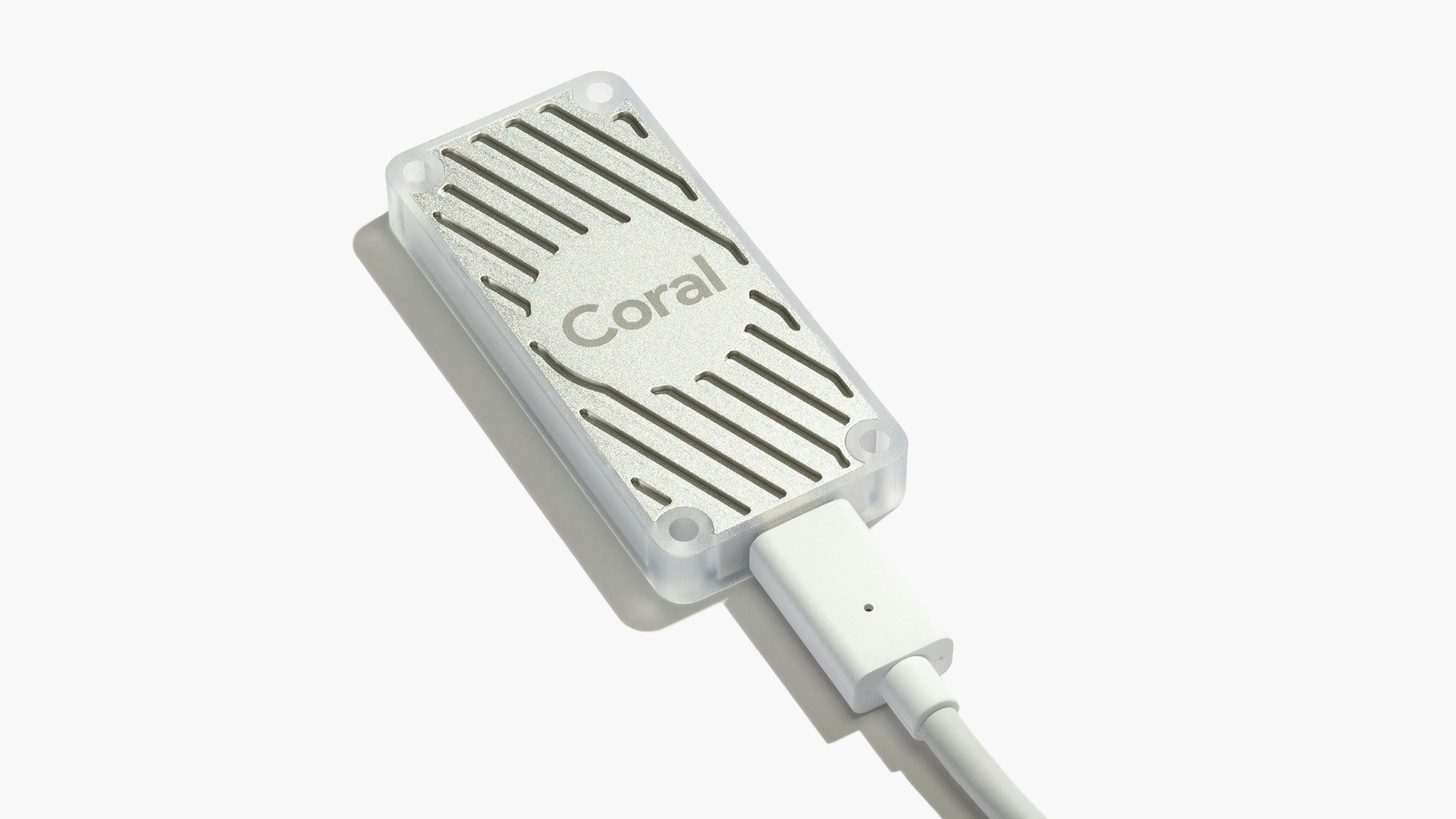Edge TPUで推論
イントロ
Coral USB AcceleratorはUSB 3.0のポートに挿す事で機械学習処理の推論処理をオフロードできるアクセラレーターです。
Google Reserachにより提供されており、DesktopCPU比でも10倍程度の速度向上が見込めるのでM1 Macを持っていなくても機械学習の推論処理を高速化できます。
初期はDebian系のOSしかサポートしていなかったのですが、既存モデルを使うだけならMacやWindowsでも動くようになっており、手元のMacで動かしてみます。
基本
公式docに従ってサンプルを動かしていきます。
https://coral.ai/docs/accelerator/get-started/
Edge TPU Runtimeのインストール
curl -O https://dl.google.com/coral/edgetpu_api/edgetpu_runtime_20201204.zip
unzip edgetpu_runtime_20201204.zip
cd edgetpu_runtime
sudo bash install.sh
cd ..
pathにEdge TPU Runtimeのlocationを追加。shellを再起動
# ~/.bashrcに追加
# libedgetpu.1.dylibの読み込み
export LD_LIBRARY_PATH=/usr/local/lib:$LD_LIBRARY_PATH
アクセラレーターをUSBポートに挿します。
TnesorFlowのインストール
# virtualenvの作成. 3.8系はサポートしていない
pyenv local 3.7.4
python -m venv coral_accelerator
source coral_accelerator/bin/activate
pip install --upgrade pip
pip install tensorflow
pip install https://github.com/google-coral/pycoral/releases/download/release-frogfish/tflite_runtime-2.5.0-cp37-cp37m-macosx_10_15_x86_64.whl
分類のサンプルを動かします。
mkdir coral && cd coral
git clone https://github.com/google-coral/tflite.git
bash install_requirements.sh
python classify_image.py --model models/mobilenet_v2_1.0_224_inat_bird_quant_edgetpu.tflite --labels models/inat_bird_labels.txt --input images/parrot.jpg
----INFERENCE TIME----
Note: The first inference on Edge TPU is slow because it includes loading the model into Edge TPU memory.
14.4ms
4.4ms
4.3ms
4.7ms
4.4ms
-------RESULTS--------
Ara macao (Scarlet Macaw): 0.77734
無事インコをインコとして認識しました。
PyCoralで推論
2020/11の更新でPyCoral APIが発表されています。それに伴いEdge TPU Python libraryの使用は非推奨。
PyCoralも独立したrepositoryがあるのでそのサンプルも動かしてみます。
# macOS 10.15 Python 3.7
pip install https://github.com/google-coral/pycoral/releases/download/release-frogfish/pycoral-1.0.0-cp37-cp37m-macosx_10_15_x86_64.whl
git clone --recurse-submodules https://github.com/google-coral/pycoral
cd pycoral
git submodule init && git submodule update
$ python3 examples/detect_image.py --model test_data/ssd_mobilenet_v2_coco_quant_postprocess_edgetpu.tflite --labels test_data/coco_labels.txt --input test_data/grace_hopper.bmp --output ${HOME}/grace_hopper_processed.bmp
----INFERENCE TIME----
Note: The first inference is slow because it includes loading the model into Edge TPU memory.
32.00 ms
14.98 ms
15.08 ms
16.18 ms
16.02 ms
-------RESULTS--------
tie
id: 31
score: 0.83984375
bbox: BBox(xmin=227, ymin=419, xmax=292, ymax=541)
person
id: 0
score: 0.8046875
bbox: BBox(xmin=0, ymin=9, xmax=519, ymax=590)
$ python3 examples/semantic_segmentation.py \
> --model test_data/deeplabv3_mnv2_pascal_quant_edgetpu.tflite \
> --input test_data/bird.bmp \
> --keep_aspect_ratio \
> --output ${HOME}/segmentation_result.jpg
所感
似たようなアクセラレーターとしてIntelのNeural Compute Stick 2があります. そちらはラズパイのような組み込み用のCPU比だと十分速度向上が見込めるようなのですが、Desktop CPU比だと負けるという話もあります。またNCS2で使用するのはマイナーなOpenVINOというIntel製の機械学習ライブラリー(複数backend選択できるラッパー)です。
一方Coral USB AcceleratorはTFLiteベースなので慣れ親しんだTensorFlowですね。発熱の問題もあるので全ての場合にEdge TPUの方がいいというわけではないのですが、組み込みでない汎用PC向けのアクセラレーターとしてはCoralの方が向いている気はしました。


